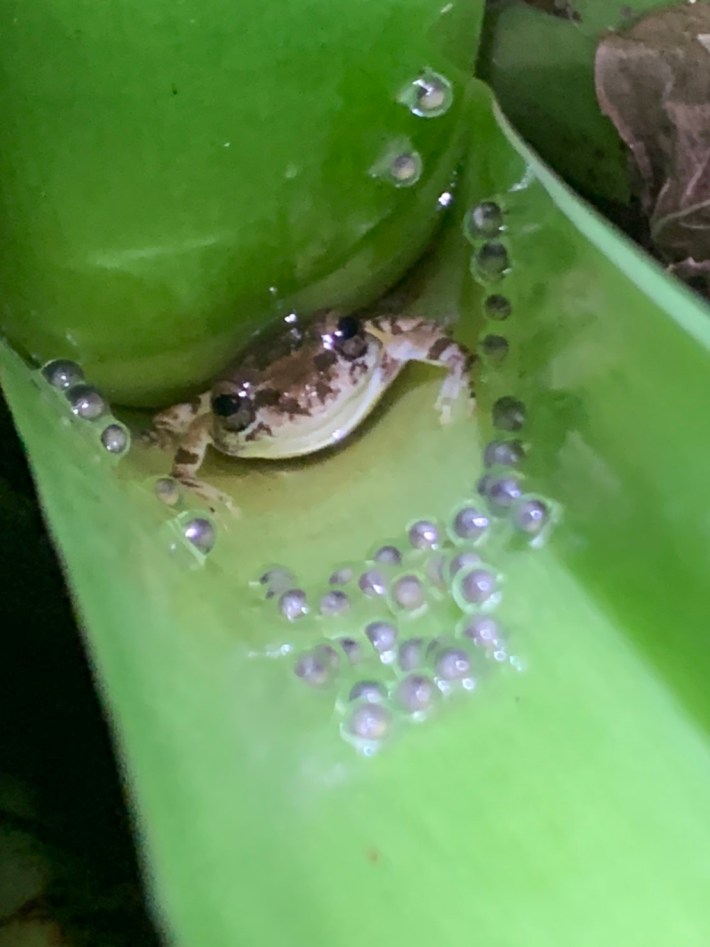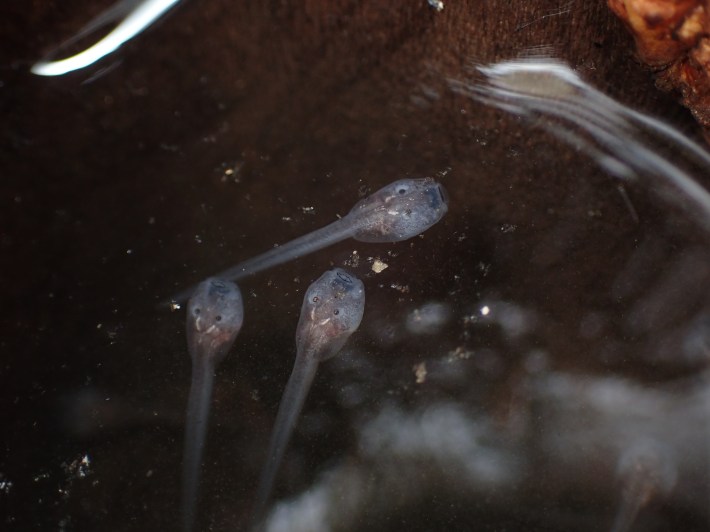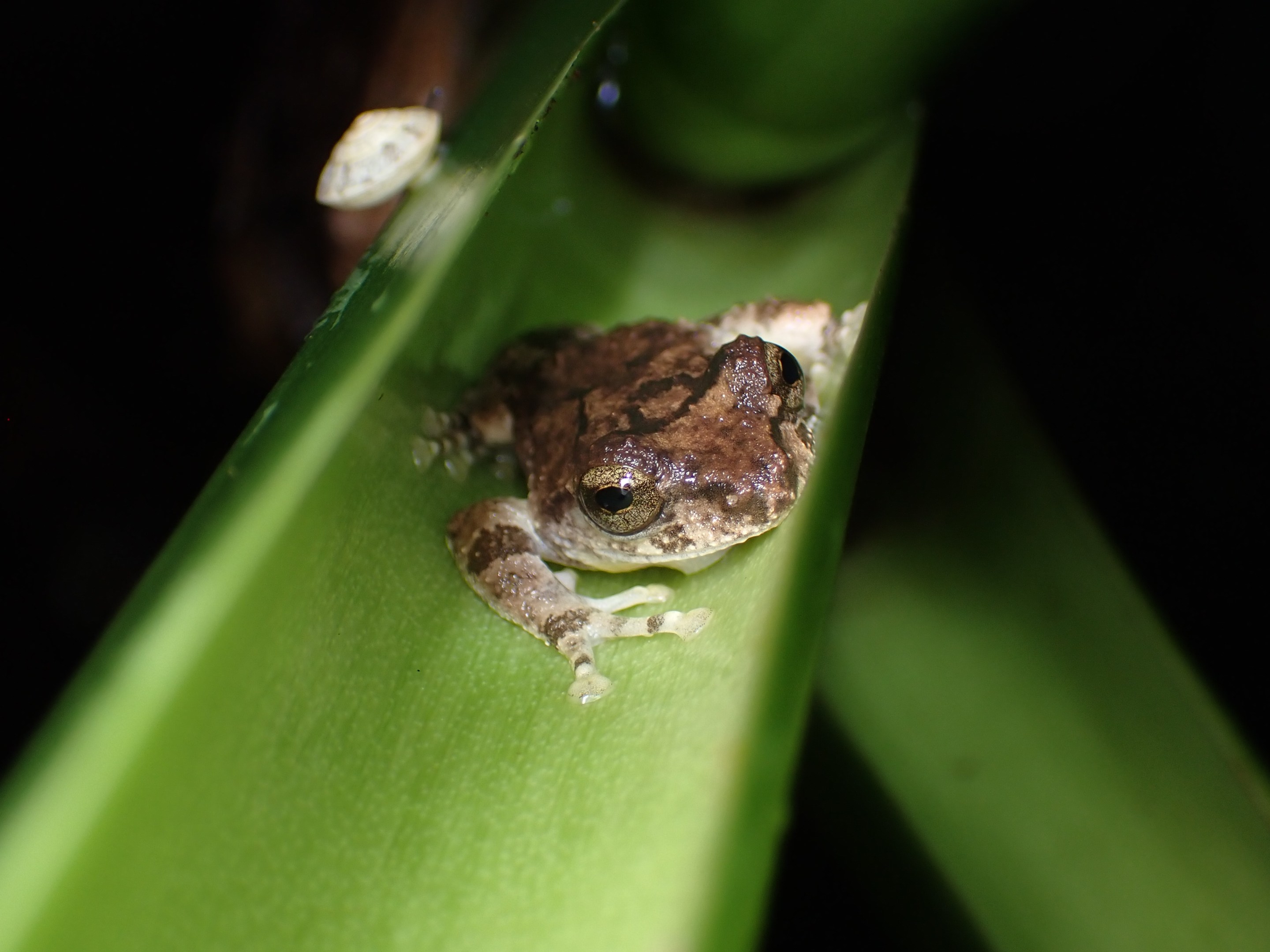Bun Ito, a master's student at Tokyo Metropolitan University and Nagoya University, had begun rearing some Taiwanese tree frogs, greenish yellow amphibians each about the size of a lychee. The frogs, Kurixalus eiffingeri, live in the bamboo and broadleaf forests of Taiwan and parts of Japan, and raise their young in the small pools of water in tree hollows and bamboo stumps called phytotelmata. Ito was interested in the fact that parent frogs fed their tadpoles unfertilized eggs. But he noticed something strange. "I observed that the tadpoles were not defecating," he wrote in an email.
From the moment a Taiwanese tree frog hatches from an egg to the moment it metamorphoses into an adult frog, between 21 and 43 days later, it eats just like any other species of tadpole. But, unlike other tadpoles, it does not appear to poop. It excretes no solid waste whatsoever until a few days after it reaches adulthood. Ito and Okada recently described the remarkable feat of these tadpoles in the journal Ecology.
Although going your entire childhood without pooping might seem extreme, it solves a lot of problems for the Taiwanese tree frog. The frogs spend their entire adolescence in phytotelmata of less than half a cup of standing water. And female Taiwanese tree frogs will often lay new or overlapping clutches of eggs in the same phytotelma. In these conditions, even tiny amounts of waste build up over time, and with no natural filtering system, can become toxic to the tadpoles clustered together in these cramped quarters.
Some bees and ants that grow up around their siblings have solved this sanitation problem in similar ways, retaining feces in their gut until they are able to metamorphose and excrete their waste elsewhere. But bees and ants are very different animals than frogs. Most baby amphibians excrete freely, as the large bodies of water around them quickly dilute the ammonia in their waste. In other words, pooping is very much the norm for most frogs. "Tadpoles that exhibit reduced defecation have never been documented before," Ito said.

To better understand how and why Taiwanese tree frog tadpoles don't appear to poop, the researchers gathered tadpoles of two more ordinary amphibians, Japanese tree frogs and Japanese mountain brown frogs, both of which live in open-water ponds where defecation is no issue. The researchers hatched tadpoles of all three frog species. The Taiwanese tree frogs fed on their mothers' unfertilized eggs and the two Japanese frogs ate fish food. When the larvae hovered between Gosner stages 30 and 40—going from sperm-shaped to some nubby legs—the researchers placed them in individual cups of water. The larvae fasted for this part of the experiment to avoid any pollution from their food.
Over the course of nine days, the researchers measured the ammonia concentration in each tadpole's cup. Then they fed the tadpoles and then dissected the feces out of their gut. They found the Taiwanese tree frogs produced a much lower amount of ammonia in their cup water and also had much higher concentrations of ammonia in their guts; they had simply been holding it. This led the researchers to conclude that the tadpoles grow without defecation, or at least with a significantly reduced amount of waste. I asked Ito if this meant that the tadpoles peed a little but did not poop. "We’re not certain yet, as the research has not progressed that far, but it’s a possibility," Ito said. "Alternatively, the feces might be in liquid form and could be leaking from the anus."

Although this is the first time scientists have observed tadpoles as poop-shy as these, the researchers predict that other species of frogs living in phytotelmata, such as poison dart frogs, may employ similar strategies. And questions remain about the sacrifices that might be required for prolonging pooping, such as "how they actually suppress defecation and whether or not they have problems with ammonia toxicity accumulating in their intestines," Ito said.
It is a tragedy of interspecies communication that we are not able to directly ask a young adult Taiwanese tree frog, when it finally leaves the cup, what it is like to perform the first poop of their life, but one must imagine few better feelings in the world. From Ito's observations, the frogs develop their first solid feces a few days before metamorphosis. But this first poop is special, quite unlike the rest of the banal poops they will have for the rest of their life. "The feces are smaller, much like their body size, and appear somewhat greenish," Ito said, adding that the color may be due to the buildup of bile. This is only fitting; green is, after all, the color of growth and new beginnings, sending the froglets into a bright and hopeful future where they will finally know the joy of being regular.






